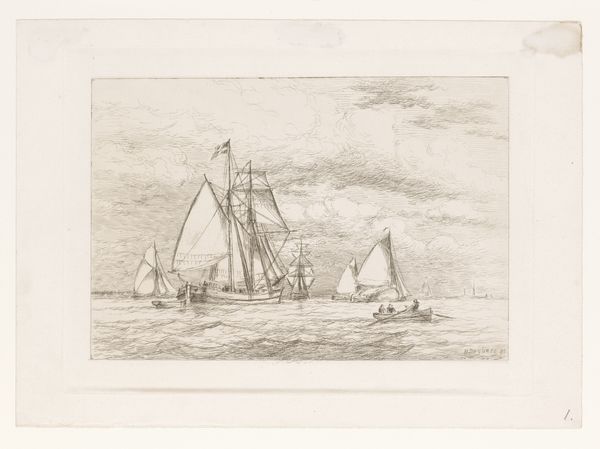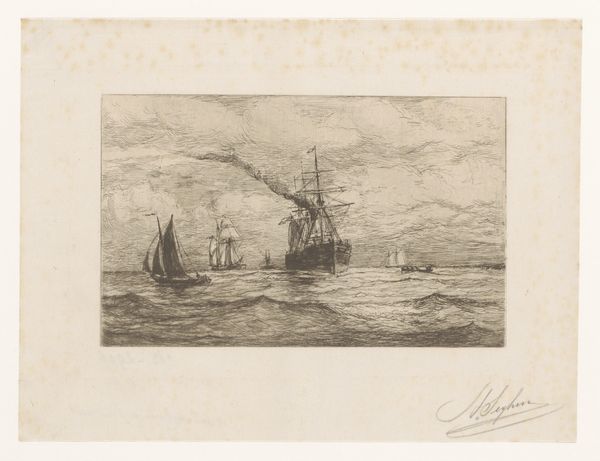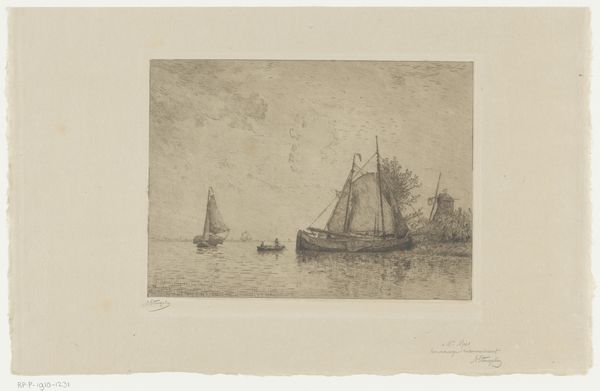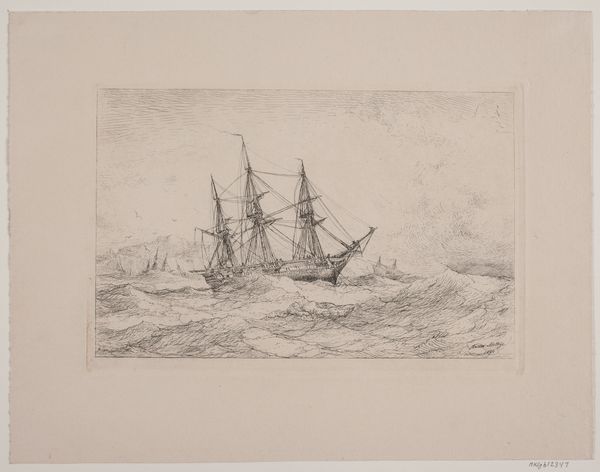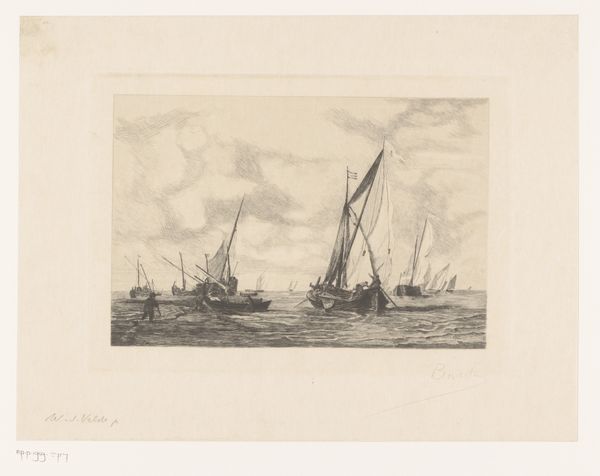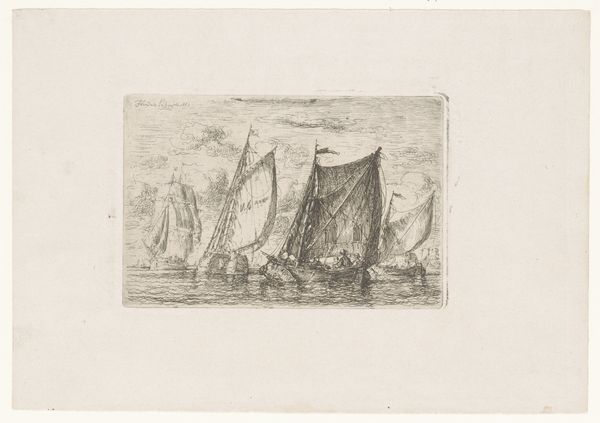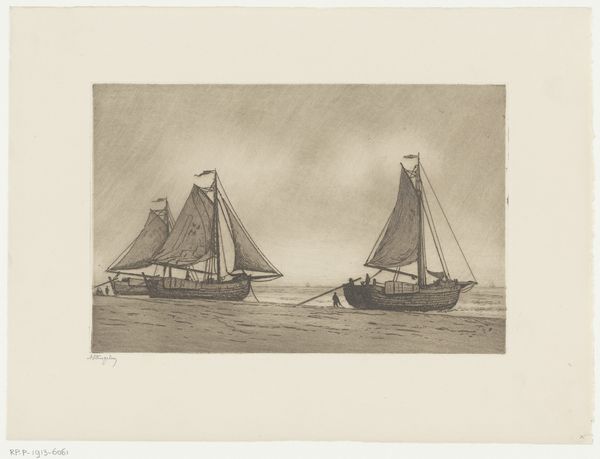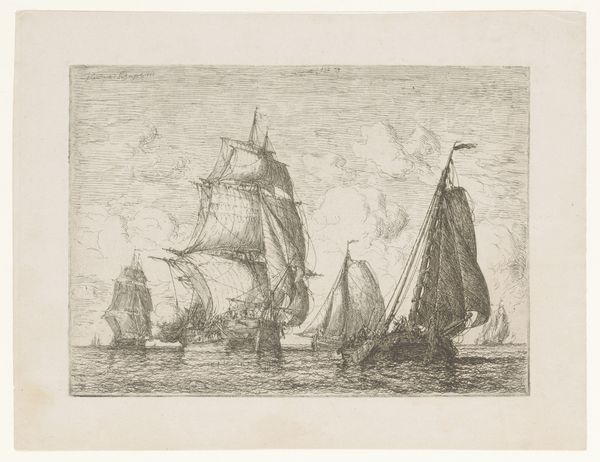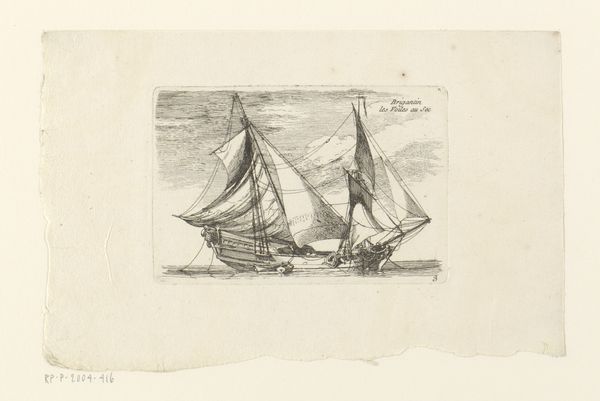
drawing, print, etching
#
drawing
# print
#
etching
#
landscape
#
etching
#
cityscape
Dimensions: height 399 mm, width 400 mm
Copyright: Rijks Museum: Open Domain
Curator: Looking at this etching from 1915, I immediately think of the pivotal historical events surrounding its creation. Editor: Yes, "Schepen," by Willem Bastiaan Tholen, really speaks to me with its layered textures achieved through etching. You can almost smell the oily metal and ink, feel the weight of the press. Curator: Absolutely, but I see a world on the cusp of monumental change. Produced during World War I, the detailed rendering of ships carries symbolic weight. These aren't just boats; they represent trade, conflict, and geopolitical tension. Editor: That's valid, but to me, it's fundamentally about process and labor. The precision demanded by the etching technique, the skill required to capture the light on the water, the hours someone dedicated to producing it. These aspects bring value. The materiality echoes the ships as machines that revolutionized transportation but are also material intensive. Curator: But doesn't the depiction of varying vessel sizes within the harbor itself point to the socio-economic divisions of the time? From grand sailing vessels to steamships, each represents a level of industrial and capitalist reach during that specific period in Dutch history. Editor: Perhaps. However, focusing on class alone would omit consideration of the production conditions behind art like this. I’m interested in the etcher's place in that world and the work of producing prints like this at that time. Curator: Fair. But what of Tholen himself, a noted Dutch realist? The artwork speaks of national identity amidst global instability. Are we truly free to explore only materials and production and erase this context? Can't we bring our reading back into dialogue with materials in art? Editor: Both exist simultaneously and define one another; an awareness of the economic structures and resources enable Tholen to pursue his craft. Curator: Yes, so perhaps in viewing art with many perspectives, like this port filled with a variety of ships, our understanding becomes richer and more complete. Editor: Precisely, each telling detail of production informs us as much as historical consideration allows for further understandings.
Comments
No comments
Be the first to comment and join the conversation on the ultimate creative platform.

